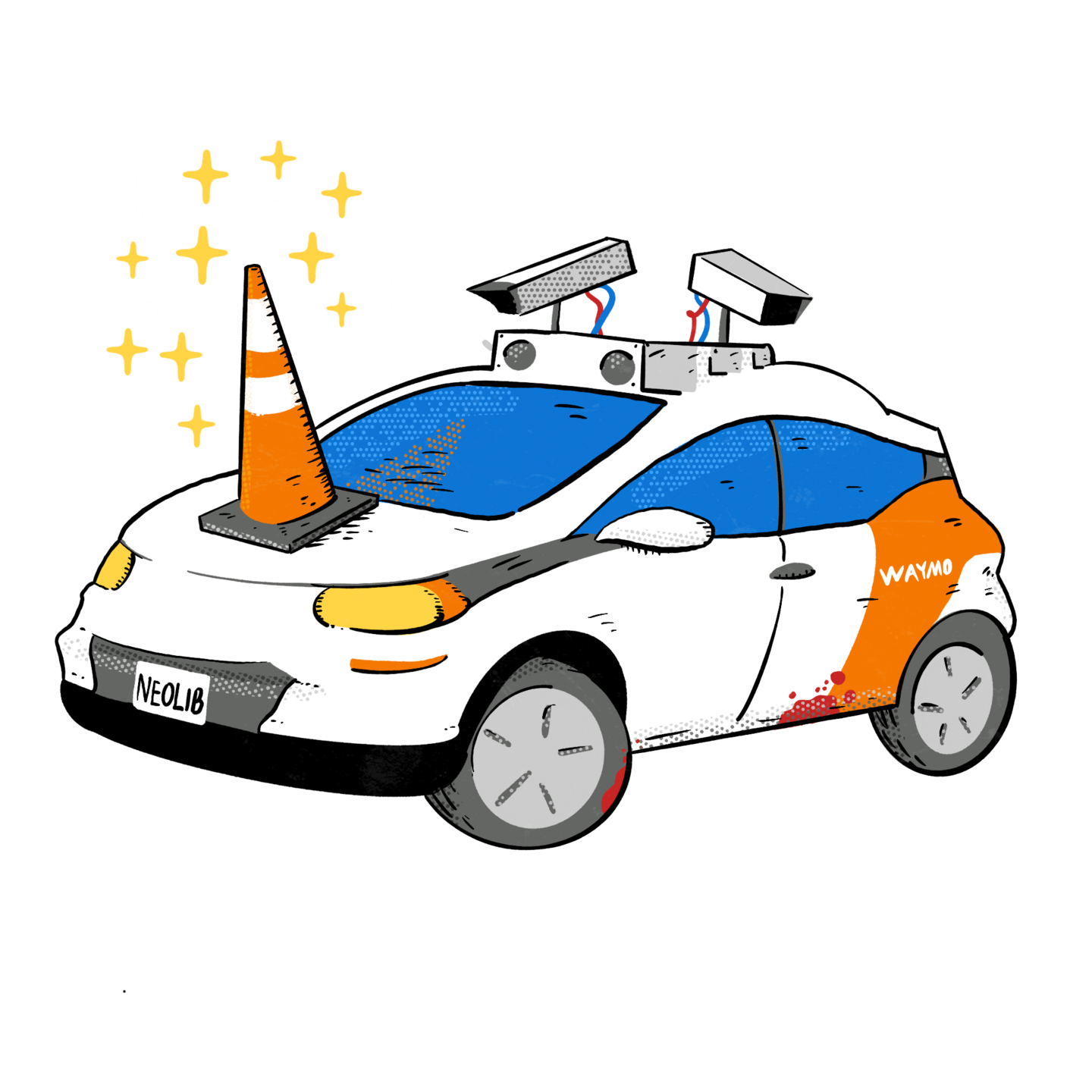
SFist – Tesla Opens Up Robotoaxi App to All In SF, But Can They Even Do That?
Editors note: should also have mentioned that you can’t actually take the vaporware service. An app is rather worthless if it doesn’t provide the intended function.
See original article by Jay Barmann at SFist
Tesla is pushing ahead with its Robotaxi service in SF, despite what we thought were a lot more regulatory hurdles that, as far as we know, Tesla’s autonomous taxis have not actually gone through.
The Tesla Robotaxi app went live in the Apple App Store on Wednesday, with a waitlist for signups for Tesla Robotaxi rides in the Bay Area — and with a service map that includes SF, Oakland, Berkeley, and much of the Peninsula down to San Jose.
As we noted in late July, when Tesla first began rolling out the service here, CEO Elon Musk didn’t use the words “autonomous” or “robotaxi” in his announcement on Xitter, saying only, “You can now ride-hail a Tesla in the SF Bay Area, in addition to Austin.” That, we surmised, was because Tesla has some sort of limousine service permit in California, but they have not yet done — as far we understand — all the hours of safety testing of their fully autonomous vehicles. And the service was reportedly launching with safety operators in the driving seat of the cars.
That may still be the case, but the app is called Tesla Robotaxi, and its Terms of Service, which pop up when you sign up for a new account, suggests that some rides may be autonomous with no safety operator at the wheel. This appears to be a holdover from Austin, where safety operators were sometimes in the passenger’s seat, reportedly. And the Terms of Service copy indicates that all rides in California have regulatory approval from the California Public Utilities Commission.
“If your ride is taking place without a safety driver present in the driver’s seat, it is being conducted autonomously. By choosing the button below, you agree to Tesla’s Robotaxi Terms of Service…” the copy reads. “If your ride is taking place with a safety driver present in the driver’s seat, it is being conducted using FSD [full-self-driving] (Supervised)… Rides in California are being conducted pursuant to authority from the California Public Utilities Commission.”


Musk claimed to be “waiting on regulatory approval” when he announced on Xitter in early July that Robotaxi service was coming to the Bay “in a month or two.” But the media quickly discovered that Tesla had not even applied for certain vital permits yet.
As of late July, as Business Insider reported, neither the CPUC nor the California DMV had given permits to Tesla to operate a) fully autonomous vehicles, nor b) fully or semi-autonomous vehicles with safety drivers wherein passengers were being charged. Tesla attorneys had suggested to the DMV that their intention was only to operate a conventional transportation service, like Uber, using semi-autonomous software that was functionally the same as what is sold with its regular Tesla vehicles. Reps for the state agency continued to seem skeptical.
The app, as seen above, does have payments showing in it, and it’s not clear if those will just zero out for the Bay Area, or how this is going to work. It’s also unclear whether the safety driver thing will even pass muster, since the app is called “Robotaxi.”
The Robotaxi landing page, even, says, “We’re bringing these autonomous rides to you today — starting with Model Y Cybercab, our fully autonomous vehicle, will begin offering rides in your area in the future.”
Emily Warren, a deputy secretary at the California State Transportation Agency, reportedly contacted Tesla following the media reports about the launch of the Robotaxi service here, warning them that they only had permits to operate a conventional transportation service, not with AVs — or even this FSD software, supervised or not.
It remains unclear whether Musk is trying to skirt the rules around AV testing to get his Robotaxi service launched in a hurry. But as noted on SFist earlier, this all certainly feels reminiscent of former Uber CEO Travis Kalanick rolling out Uber’s erstwhile self-driving SUVs in 2016, without seeking any permits whatsoever from the state — in a classic Silicon Valley seek-forgiveness-not-permission move. Uber’s transgression was, needless to say, quickly shut down.
As Politico reported in July, Tesla had been in touch with California regulators and had several meetings with DMV officials about this project dating to early 2024, but the project appeared to have dropped by the wayside during Musk’s short-lived foray into Washington politics. Nonetheless, Musk seemed to be making launch announcements just before meetings were scheduled this summer, and both the CPUC and DMV reportedly expressed alarm.
In early July, former SF supervisor turned CA Assemblymember Catherine Stefani wrote an open letter to the DMV, expressing “deep concern” about Musk’s tweets suggesting that Tesla Robotaxis were about to start rolling in the Bay Area.
“To date, it appears that Tesla has not completed even the most basic steps necessary to obtain a DMV Driverless Deployment permit,” Stefani wrote. “Combined with the ongoing NHTSA investigation and the growing safety concerns stemming from its operations in Austin, there is no credible basis on which the DMV could deem Tesla’s technology ready for public deployment on our streets.”
Stefani told Politico, “If any other company tried to skirt the rules like this, they’d be shut down immediately.”
Meanwhile, in Texas, the state’s regulation requiring new permits for autonomous vehicle operation just took effect on September 1, and Austin users of the Tesla Robotaxi service took note on X that their rides were showing up with safety drivers behind the wheel, with their hands on the wheel.
According to a Business Insider reporter, after Wednesday’s launch of the public version of the Robotaxi app, it only took three hours to get off the waitlist.
See original article by Jay Barmann at SFist
